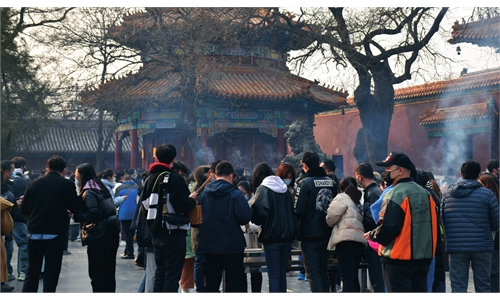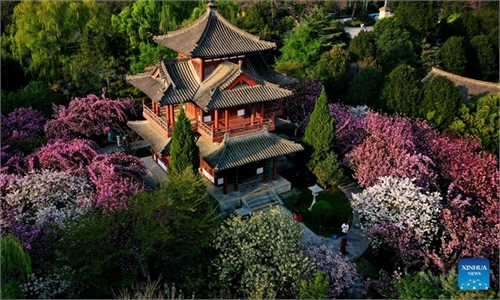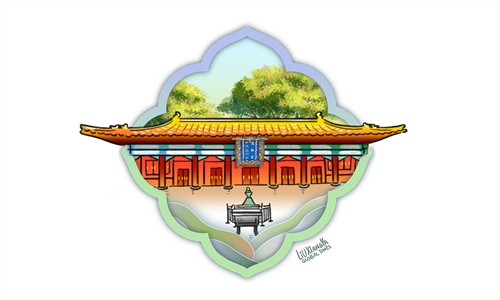ARTS / CULTURE & LEISURE
Chinese temples attracting young people with trendy, well-designed products
Getting creative
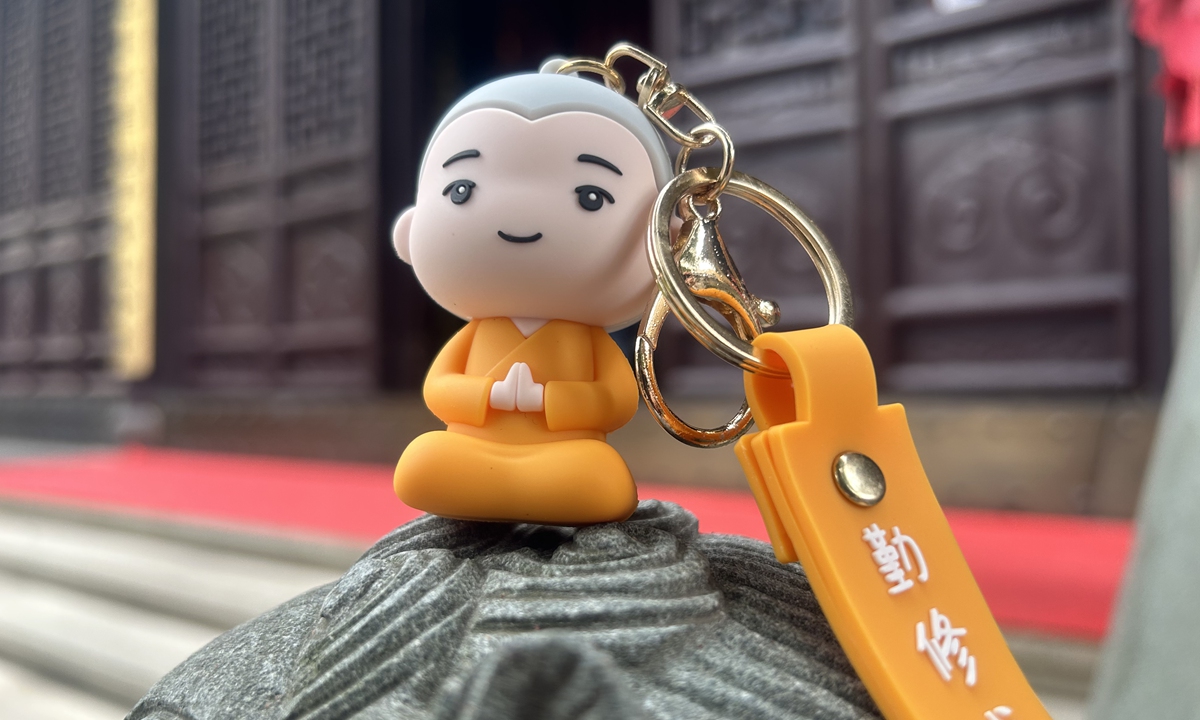
A key chain featuring the cartoon figure Shixiaobai on sale at the Yufo Temple in Shanghai Photo: Huang Lanlan/Global Times
To buy one of Yonghe Lama Temple's beaded bracelets, Shanghai woman Liang Yu deliberately took time out during her busy business trip to Beijing to wait in line in the cold for more than an hour in front of the temple's store.
It was an ordinary Monday afternoon in March when Yonghe Lama Temple's beaded bracelets started gong viral on Chinese social media. The centuries-old Buddhist temple in downtown Beijing has been flooded with visitors even during the weekdays ever since. Including Liang, many of them waited in long queues to buy the popular bracelets, which they believed can bring them good luck, or at least help cheer themselves up.
Visiting temples has recently become a new trend among some young Chinese. They are motivated by such purposes as relieving stress or wishing for good fortune.
Due to this trend, many Chinese temples have started to offer creative and well-designed products to meet the tastes of young visitors.
Instead of the traditional items sold at temples, like Buddhist scriptures and amulets, new products include cups, pens and ornaments that have more secular uses, many of which cleverly combine Buddhism with designs such as cartoon figures and traditional Chinese culture.
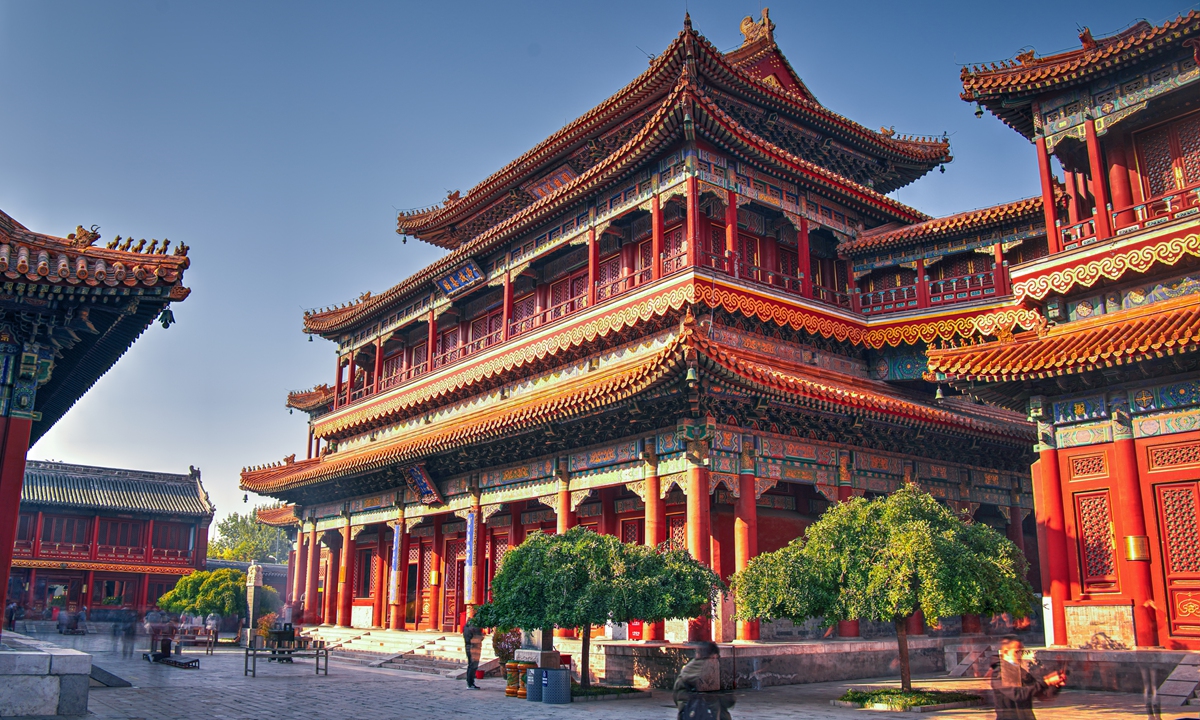
Yonghe Lama Temple Photo: VCG
Bestseller braceletsLiang bought 10 bracelets at the temple for herself and her friends that afternoon, each of which cost nearly 400 yuan ($56).
The temple offers several types of beaded bracelets in various colors that are supposed to improve people's fortunes for things like their health, career and relationships.
"I bought one for my career," Liang told the Global Times.
She said that the Yonghe Lama Temple, the former residence of two Qing Dynasty (1644-1911) emperors, is generally believed to be a good destination for making career-related wishes.
More temple products are designed to directly serve people's daily life nowadays.
Over the weekend at Yufo Temple, or Jade Buddha Temple, a famous Buddhist temple located in central Shanghai, visitors crowded in the temple's store, selecting commodities piled up on the shelves such as ink pens, teacups and key chains.
Among the various products, a 99 yuan gift box for students is a bestseller, according to one shop employee. The box contains four ink pens, a silk sachet and a badge with a cartoon image of the Bodhisattva of Wisdom, Manjusri, on it.
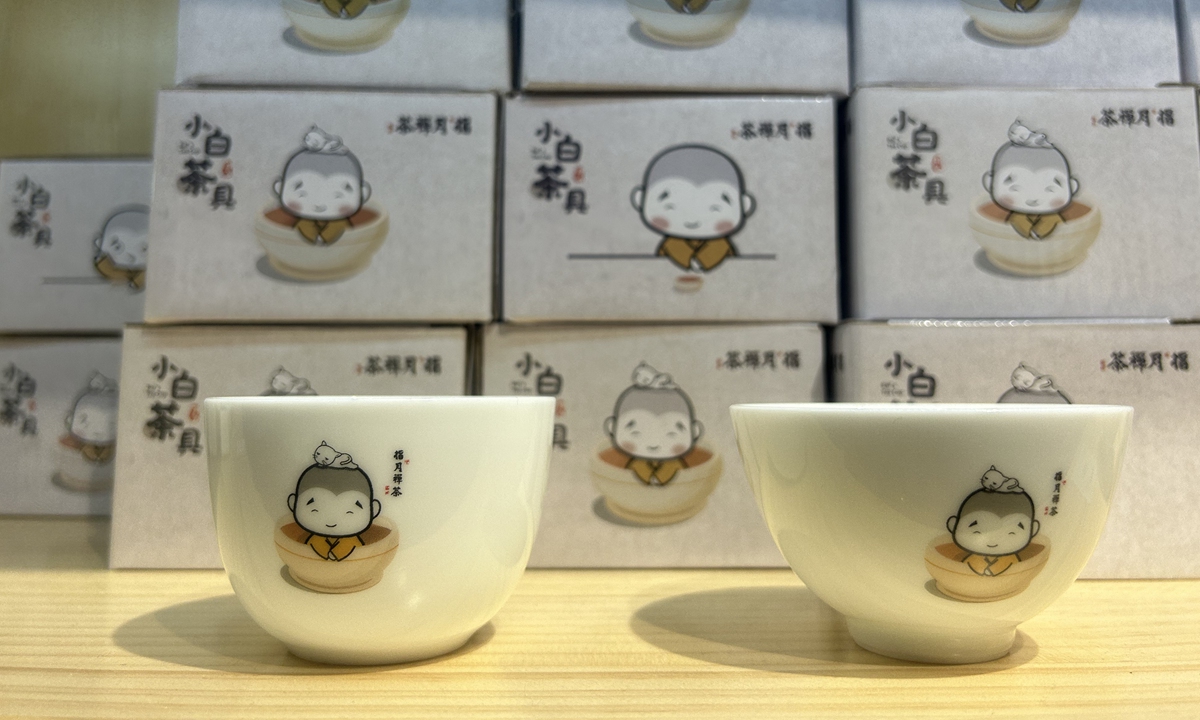
Teacups featuring the cartoon figure Shixiaobai on sale at the Yufo Temple in Shanghai Photo: Huang Lanlan/Global Times
Traditional culture elementsAnother popular cartoon figure sold at Yufo Temple is of a little monk named "Shixiaobai."
"Shixiaobai is a cartoon character invented and designed for our temple's products," the Yufo Temple shop employee told the Global Times.
Products sporting Shixiaobai have proven popular among younger customers, she added, pointing toward another big seller on the shelf - a 68-yuan teacup with Shixiaobai's picture on it.
Similar to Yufo Temple, in recent years some other temples have designed cartoon characters for their products to attract younger customers.
One of the earliest and most famous characters is Xian'er, a cartoon monk originally created by Beijing's Longquan Temple in 2011. Through the years, Xian'er has been used for various Longquan Temple-related products, from small ornaments to storybooks and even television cartoons.
Apart from cute cartoon images, traditional Chinese culture is also a major feature of recent temple creative products. The Wenshu Monastery, or Monastery of Manjusri, in Chengdu, Southwest China's Sichuan Province, for instance, has launched a series of products made using intangible cultural heritage skills, such as a porcelain teacup wrapped in a woven bamboo cover, an intangible heritage item unique to Sichuan known as porcelain-bodied bambooware.
Chinese temples are moving with the times, said Buddhist enthusiast Bai Ze, who is also an independent temple product designer working with several temples in East China's Jiangsu Province.
"As younger monks join temples, they bring new ideas, allowing temples to innovate their designs," Bai said.
Bai found that small-sized and good-looking products are a favorite of young customers.
"They are happy to pay for those beautiful and portable things with auspicious meaning," she told the Global Times.
Controversial prices
However, controversy has sometimes occurred with the going popularity of these creative products.
Grumbles about unreasonable prices are occasionally seen on social media. On the Twitter-like Sina Weibo, a user complained that she bought a rabbit-shaped key chain accessory for 88 yuan at a temple in Shanghai, but later found a similar item without the temple's logo for only 10 yuan on a shopping website.
A few products even charge a "pink tax" from female customers. Liang said the beaded bracelets she bought at Yonghe Lama Temple have men's and women's versions. "The women's bracelets are smaller than the men's, but they are sold at higher prices," said Liang, who founded nonprofit foundation Stand By Her to help women in need.
"That's not fair."
Temples are going commercial, which brings profit that allows them to keep running, but it brings new problems as well, Bai said.
Nonetheless, for most customers, price is not their top consideration when buying temple creative products, she added.
"They buy to wish for good fortune, or at least to get in a better mood."

